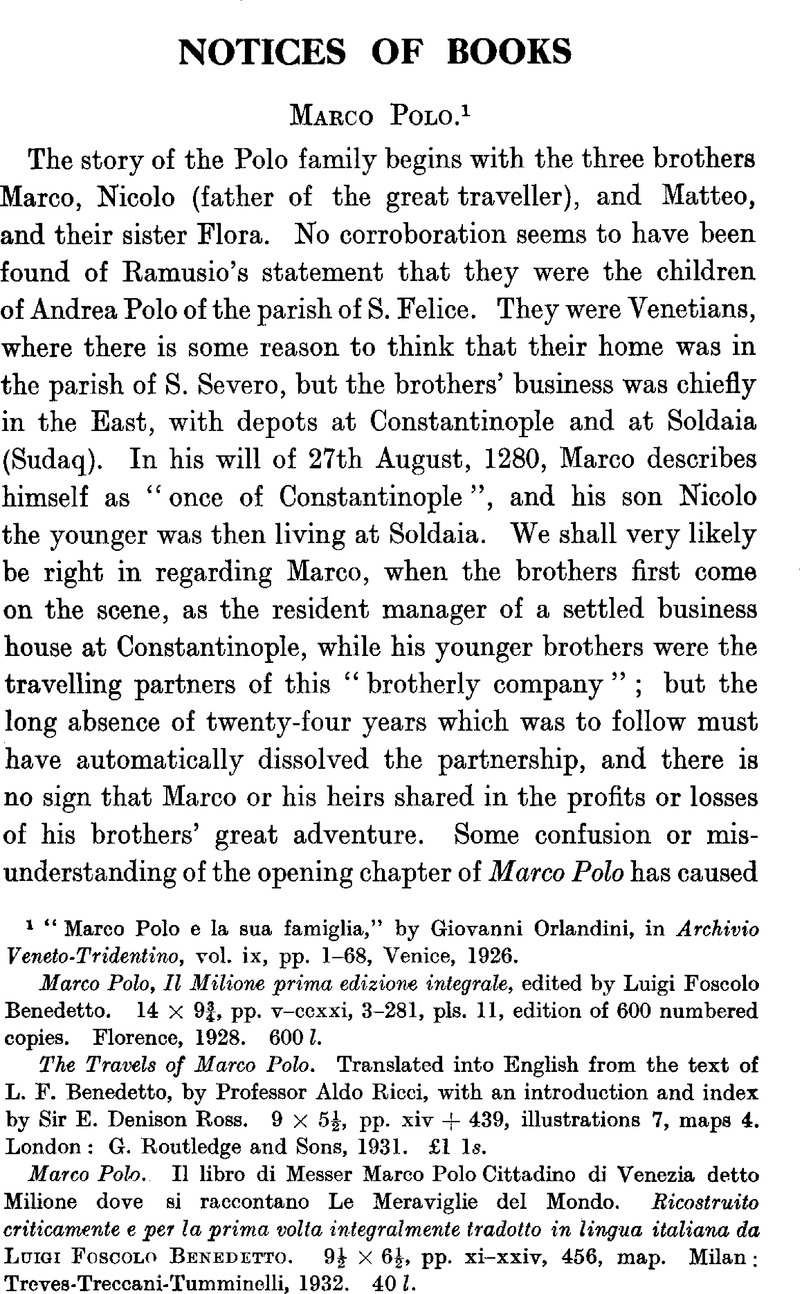Published online by Cambridge University Press: 15 March 2011

1 “Marco Polo e la sua famiglia,” by Orlandini, Giovanni, in Archivio Veneto-Tridentino, vol. ix, pp. 1–68, venice, 1926Google Scholar.
Marco Polo, II Milione prima edizione integrate, edited by Benedetto, Luigi Foacolo. 14 × 9–ccxxi, 3–281Google Scholar, pls. 11, edition of 600 numbered copies. Florence, 1928. 600l.
The Travels of Marco Polo. Translated into English from the text of L. F. Benedetto, by Professor Aldo Ricci, with an introduction and index by Sir E. Denison Ross. 9 × 5½, pp. xiv + 439, illustrations 7, maps 4. London: G. Routledge and Sons, 1931. £1 Is.
Marco Polo. II libro di Messer Marco Polo Cittadino di Venezia detto Milione dove si raccontano Le Meraviglie del Mondo. Ricoslruito criticamente e per la prima volta integralmente tradotto in lingua italiana da Luigi Foscolo Benedetto. 9½ × 6½, pp. xi–xxiv, 456, map. Milan: Treves-Treccani-Tumminelli, 1932. 40 l.
page 604 note 1 The principal MSS. mentioned below are F (Paris, B.N., fr. 1116; Franco-Italian, early fourteenth century), FA (ibid., fr. 2631; French, fourteenth century), FB (ibid., fr. 2649; French, fifteenth century), TA (ibid., it. 434; Italian, ? fourteenth century), LT (ibid. lat. 3195; Latin, fourteenth century), P (London, B.M., Reg. 14 C xiii; Latin by Pipino from Venetian, fourteenth century; the most widely diffused of all the classes of text), Z (Milan, Ambrosiana, Y 160 pars. sup.; Latin, 1795, a certified copy of an old MS. now lost); with the printed text R (Ramusio, J.-B., Nagigationi e Viaggi, vol. ii, 1559Google Scholar). See also the list of MSS., pp. 017 ff. below.
page 609 note 1 In one place in the chapter on Dagroian F has chouse and FB robes. It is hard to see how FB can have translated chouse (chose) into robes, tut easy for both readings to be derived from an original Italian robbe. But this instance stands, as far as I have noticed, alone. And Benedetto in another place suggests that the original may have contained even more Italian than F does.